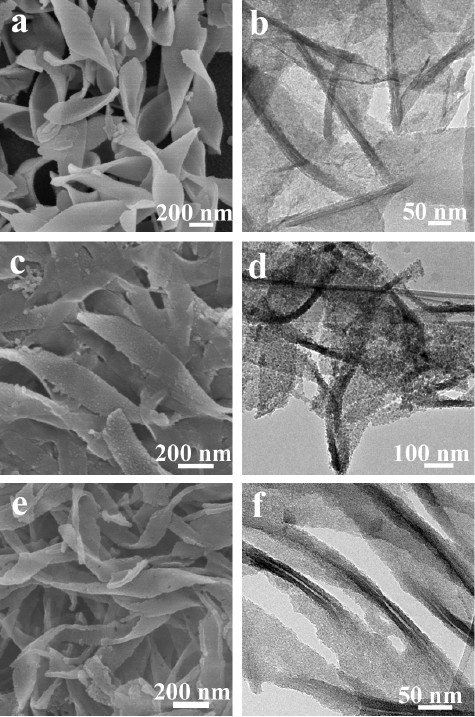Yi Li, Sibing Wang, Min Xiao, Mingliang Wang, Zhibin Huang, Baozong Li and Yonggang Yang*(杨永刚)
Jiangsu Key Laboratory of Advanced Functional Polymer Design and Application, Department of Polymer Science and Engineering, College of Chemistry, Chemical Engineering and Materials Science, Soochow University, Suzhou 215123, People's Republic of China
Nanotechnology 2013, 24, 035603
We reported the preparation of chiral 1,4-phenylene–silicas, using a sol–gel transcription approach, by self-assembly using low-molecular-weight gelators as templates. The silicas exhibited chirality at both the nano and angstrom levels. However, the relation between the chirality at the nano level and that at the angstrom levels has not been well studied. In this study, chiral 1,4-phenylene–silica nanoribbons were prepared by the self-assemblies of three chiral cationic gelators derived from amino acids as templates. These samples were characterized using field-emission scanning electron microscopy, transmission electron microscopy, x-ray diffraction, and circular dichroism. The results indicated that the handedness of the nanoribbons and the stacking of the aromatic rings were controllable. Although the nanoribbons exhibited left-handedness at the nano level, the stacking of the aromatic rings could exhibit left- or right-handedness. The handedness of the nanoribbons at the nano level was controlled by the organic self-assembly of the gelator. However, the stacking of the aromatic rings seemed to be controlled by the gelator itself.

链接: //iopscience.iop.org/0957-4484/24/3/035603